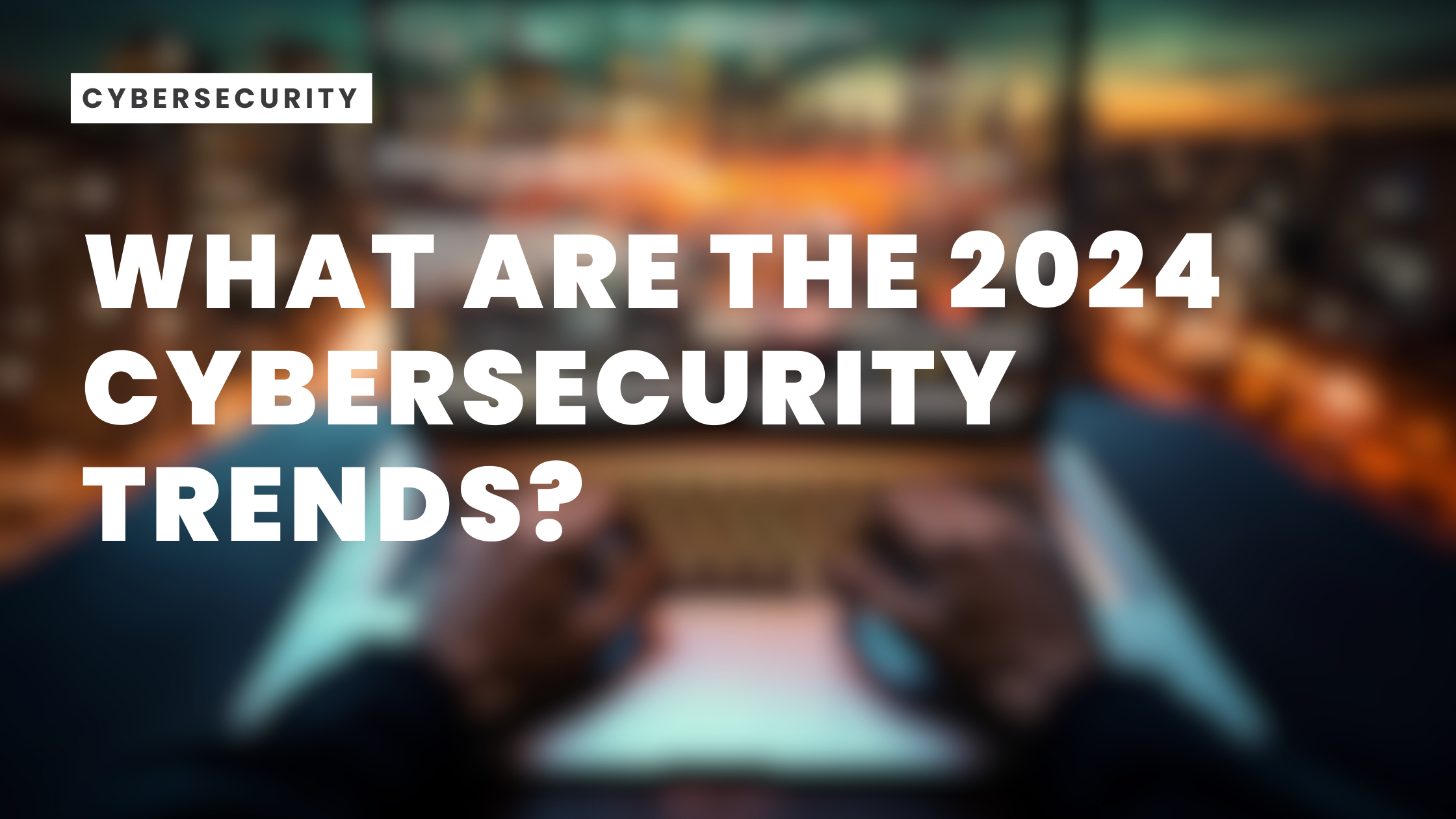What Are the 2024 Cybersecurity Trends?
In 2024, the cybersecurity landscape will be shaped by several key trends. This article aims to provide a clear and straightforward overview of these trends, from the rise of AI threats to the intricacies of IoT vulnerabilities. Our aim is to help you understand and prepare for the evolving cyber threats that are expected to define the digital world in 2024.
Key Takeaways
- Phishing schemes are getting more complex with the use of technology like deepfake, making them harder to spot. We need advanced machine learning to help us fight these sophisticated cyber threats.
- Ransomware is still a big problem. Ransomware 2.0 doesn't just lock data, it threatens to leak it too. This means we need strong cybersecurity measures and strategies to stay safe.
- The rise of IoT has made securing interconnected devices and managing access a key part of cybersecurity. This is because the constant data exchange between devices gives cyber attackers more opportunities.
1. Phishing Schemes
Phishing schemes, long-known cyber threats, have become trickier to detect in 2024. They've grown from simple deceptive emails to complex attacks using deepfake technology and advanced machine learning defenses.
Deepfake Technology
Once used for entertainment, deepfake technology now aids phishing schemes. By creating highly realistic fake content, cybercriminals can trick people into sharing sensitive information. This makes deepfake phishing a top cybersecurity concern in 2024.
Machine Learning:
Cybercriminals exploit machine learning, but it's also a key defense against their threats. Advanced machine learning algorithms can improve threat detection and predict potential phishing attempts. It's an essential tool in the fight against phishing, thanks to its ability to analyze vast data quickly.
2. Ransomware
Ransomware continues to pose a significant threat. The evolution to Ransomware 2.0, which not only locks but steals data, highlights the need for strong cybersecurity defenses.
Dealing with Ransomware 2.0
Ransomware 2.0 presents new challenges. It's not just about unlocking encrypted data anymore; the threat of data leakage is real. This calls for a new defense strategy to mitigate data breaches and improve threat detection.
Cyber Resilience
With the increase in ransomware attacks, cyber resilience is becoming vital. It's about maintaining operations even after a breach. A cyber resilience strategy can help organizations respond effectively to ransomware attacks, reducing their impact.
3. IoT Security
IoT devices offer convenience but also pose security risks. These devices constantly share data, creating opportunities for cyber attacks. Ensuring the safety of IoT devices and managing access are key in 2024.
Protecting Networked Devices
The growth of IoT increases network security complexity. A weak spot in one device can expose the whole network. So, it's crucial to secure these devices with strong authentication and encryption.
Access Management in IoT
As more devices join the IoT, managing user identities and access is a challenge. It's vital to allow access only to authorized users and devices to maintain IoT security.
4. AI in Cybersecurity
Artificial Intelligence (AI) is transforming many areas, including cybersecurity. But it's a double-edged sword. On one hand, cybercriminals use AI, especially large language models, for advanced attacks. On the other hand, AI can boost security infrastructure by automating responses and detecting anomalies in real-time.
Large Language Models in Cyber Attacks
Large language models can generate text that sounds human. Cyber attackers use these models to create convincing phishing emails or malicious content. This leads to more sophisticated and harder-to-spot cyber attacks.
AI Boosts Security Infrastructure
AI also helps enhance security infrastructure. It can automate threat detection, incident response, and intelligent authentication through AI-driven solutions. This allows for faster detection and response to threats, ensuring a more secure digital environment.
5. Supply Chain Security
Supply chains are vital to global commerce, but often overlooked in cybersecurity. With third-party vendors becoming common attack targets, supply chain security is now a big concern.
Reducing Risks from Third-Party Vendors
Third-party vendors can present security risks. To reduce these risks, organizations should check their vendors' cybersecurity practices, set strict security standards, and plan for potential breaches.
Creating a Strong Supply Chain Security Strategy
A strong supply chain security strategy needs a thorough approach to risk management. This includes using strong access controls and encryption, ensuring safe data storage, and promoting a security-aware culture among all involved.
6. Insider Threats and Social Attacks
The human element often poses a significant cybersecurity risk. Cybercriminals exploit human vulnerabilities, such as insider threats and social engineering attacks, to gain unauthorized access to systems and data.
To combat these threats, we need both tech solutions and a shift towards security awareness. This can be achieved with the help of cybersecurity professionals who are up-to-date with the latest trends.
Building a Security-Savvy Culture
Building a culture of security awareness is essential to reducing the risk of insider threats and social attacks. It involves:
Educating employees about risks and attacker tactics
Training them to recognize potential threats
Encouraging them to report suspicious activities
Using Multi-Factor Authentication for Better Security
Multi-factor authentication (MFA) is a highly effective way to improve security. It requires multiple forms of verification, adding an extra layer of protection against unauthorized access. MFA is especially important in remote work scenarios, where personal devices or unsecured networks may be used.
7. Cyber Warfare
Cyber threats now target elections and national security, disrupting democratic processes. Protecting these areas is a crucial cybersecurity challenge in 2024.
Election Security
Digital voting systems can be hacked. Therefore, securing these systems and maintaining the accuracy of vote counts is a significant task.
Global Collaboration
Collaboration between countries is vital to fight state-sponsored cyber attacks and protect national interests. Shared intelligence and resources can enhance cybersecurity capabilities.
8. Remote Work
Remote work has changed how we work, offering more flexibility. However, it's also brought new security issues, such as weak security protocols. The challenge is to balance flexibility and security.
Securing Cloud Environments
With more organizations using cloud-based solutions, securing these environments is crucial. This involves strong access controls, encryption, and secure data storage.
Monitoring and Responding to Incidents for Remote Teams
In the remote work context, monitoring network operations and responding to incidents is essential. It helps detect threats and respond quickly, keeping remote teams secure.
9. Summary
In 2024, cybersecurity will face many challenges. Phishing schemes are becoming more advanced, ransomware is on the rise, and IoT security is a big concern. We also see AI playing a dual role in cybersecurity - it's both a threat and a solution.
Supply chain security is now a major focus, and we must pay attention to the human aspect of cybersecurity. Cyber warfare is a new frontier, and remote work brings its own set of challenges. It's crucial to stay informed and alert to combat these evolving cyber threats.
10. Frequently Asked Questions
What are the trends for cybersecurity in 2024?
In 2024, Zero-Trust Architecture will be a major trend in cybersecurity. This method checks every user and device before giving them access to networks and data.
What is the cyber risk in 2024?
The main cyber risk in 2024 will be the use of AI to create realistic deepfakes. These can be used to manipulate social media and influence public opinion.
Is cyber security a good career in 2024?
Yes, cybersecurity will be a good career in 2024. The field is growing fast and offers many opportunities in sectors like finance, healthcare, and retail.
What do you think are likely to be the most important cybersecurity trends in 2023 and beyond?
The key trends in 2023 and beyond will be dealing with cyber threats, improving resilience, and managing the expanding attack surface, especially with the rise of the Metaverse. Ransomware will remain a major threat.
What is deepfake technology and how is it used in phishing attacks?
Deepfake technology uses AI to create very realistic fake content. Cybercriminals use it in phishing attacks to trick people into revealing sensitive information.










